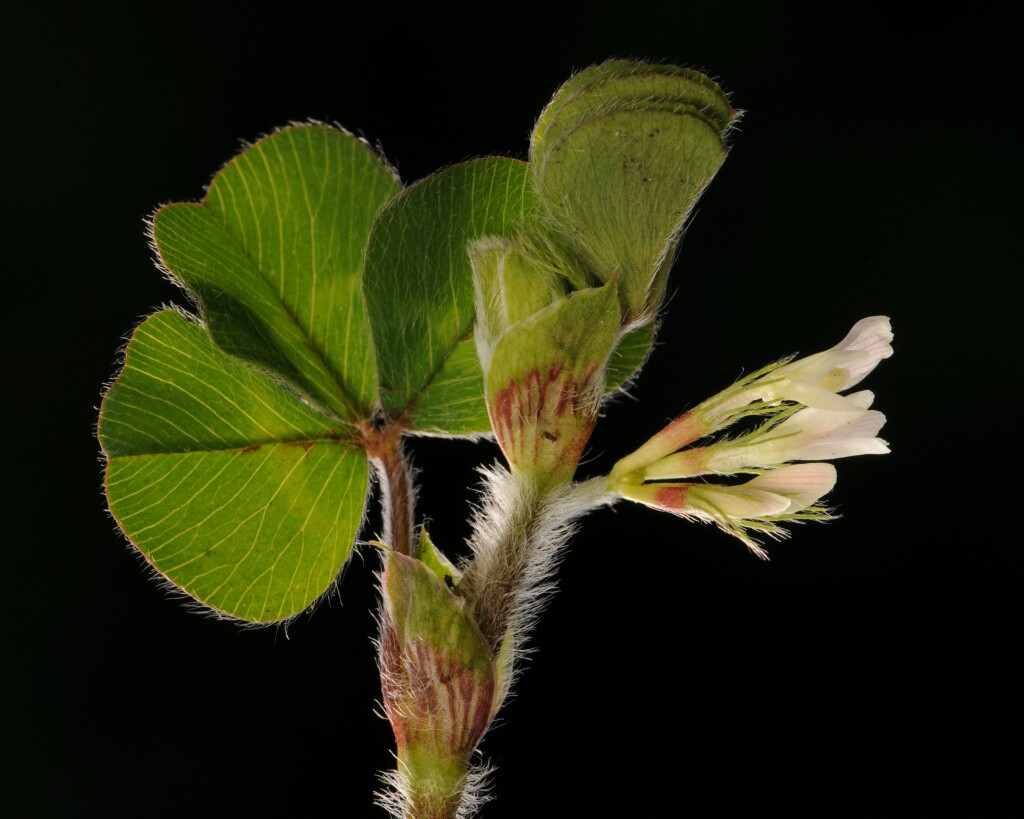Trifolium subterraneum
L. Subterranean CloverProstrate or decumbent annual herb; stems few, 10–35 cm long, weak, sparingly branched or unbranched, sparsely hairy to glabrescent. Leaves palmately trifoliolate, long-petiolate; leaflets obovate to obcordate, 8–25 mm long, 8–25 mm wide, appressed-hairy on both surfaces, apex notched, upper margins minutely dentate; stipules leafy. Inflorescence with 3–6 fertile flowers and several sterile flowers developing later, axillary, obovoid, becoming globose, c. 15 mm long, c. 5 mm wide, pedunculate; flowers sessile. Fertile calyx 3–4 mm long, glabrous or sparsely pubescent, tube cylindric, many-veined, sometimes red-tipped, distended in fruit, throat open, glabrous, teeth almost as long as tube, subequal, blunt, recurved in pod; sterile calyx with solid, stalk-like tube, teeth linear; corolla 8–14 mm long, white with pink stripes, not persistent; standard elliptic. Fruiting heads globose, c. 10 mm long, 10 mm wide, pushed into the ground by a few seed-bearing calyces and many deflexed sterile ones; pod ovoid to obovoid, c. 3 mm long, somewhat exserted from split calyx tube; seed 1, ovoid, c. 3 mm long, black. Flowers mainly Sep.–Jan.
LoM, MuM, Wim, GleP, Brid, VVP, VRiv, MuF, GipP, OtP, WaP, Gold, CVU, GGr, DunT, NIS, EGL, EGU, WPro, HSF, HNF, OtR, Strz, MonT, VAlp. Also naturalised WA, SA, Qld, NSW, ACT, Tas. Native to Europe, the Middle East, northern Africa. Grown extensively for pasture improvement and now established across much of Victoria.
Zohary & Heller (1984) recognize 8 varieties based on characteristics of the mature fruit. Trifolium subterraneum in Victoria is a complex comprising numerous cultivars and forms but at least some material can be identified as T. subterraneum var. subterraneum on the basis of the fruit equalling the length of the calyx at maturity.
Jeanes, J.A. (1996). Fabaceae. In: Walsh, N.G.; Entwisle, T.J., Flora of Victoria Vol. 3, Dicotyledons Winteraceae to Myrtaceae, pp. 663–829. Inkata Press, Melbourne.
 Spinning
Spinning



